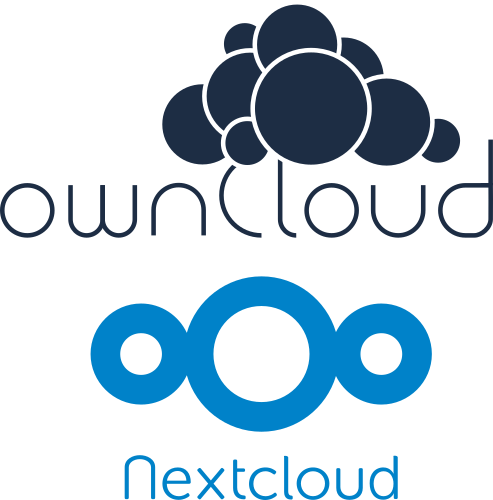Owncloud and Nextcloud clients

Owncloud and its spin-off Nextcloud are the best Dropbox alternative for a private cloud. This means that your data do not end up with a commercial provider from the USA, but on your own server, which, of course, requires the Owncloud or Nextcloud server software to be up and running. If you don’t want to host and install it yourself, you can also find yourself a provider you trust and rent an instance there.
To synchronize data with this server, a client program is needed. Clients are available for almost every conceivable platform, from smartphones to PCs – including Linux, of course.
When first started, the client asks for the connection parameters to the server. Following the Dropbox principle, a folder is specified whose contents are to be constantly synchronized. Once the connection has been successfully established, the contents of this folder on the user’s own PC or notebook are automatically synchronized with the server, who in return is able to synchronize it with other clients.
So which should you go for – Owncloud or Nextcloud? While both systems share the same code base, they have become increasingly divergent in their focus since Owncloud founder Frank Karlitschek left Owncloud in 2016 with other developers to found his Nextcloud. Today, Nextcloud is not “just” a solution for storing, synchronizing and sharing files, but also brings apps for collaboration and communication, such as the video telephony solution Nextcloud Talk. The continuous development of Nextcloud is reflected in a higher upgrade frequency. Some admins therefore complain about a “featuritis” with Nextcloud, but it clearly sets the pace and leaves Owncloud behind.
In terms of licensing policy, Nextcloud is more liberal. All code is free. Only the commercial service is subject to a fee and is primarily considered for large customers. Owncloud also earns money with enterprise customer service; here, however, individual program features are also subject to a fee. Those who look after their own instance and do not want to spend money are therefore better off with Nextcloud. That’s why I give installation instructions only for Nextcloud.
Storage location and backup
Owncloud stores personal configuration data in the directory /home/$USER/.local/share/data/ownCloud/. If you restore the folder from a backup on a newly set up computer and then start the client for the first time, you will only be asked for the password and then the connection to Owncloud will be re-established.
Installation
Nextcloud may be found in the Universe pepository of Ubuntu, so the packages are not directly supported by Canonical, but they can be easily installed. However, to keep up with the development, you should use the constantly updated repository of the developers. Nextcloud makes this especially easy thanks to its own Ubuntu PPA:
sudo add-apt-repository ppa:nextcloud-devs/client sudo apt update && sudo apt install nextcloud-desktop
